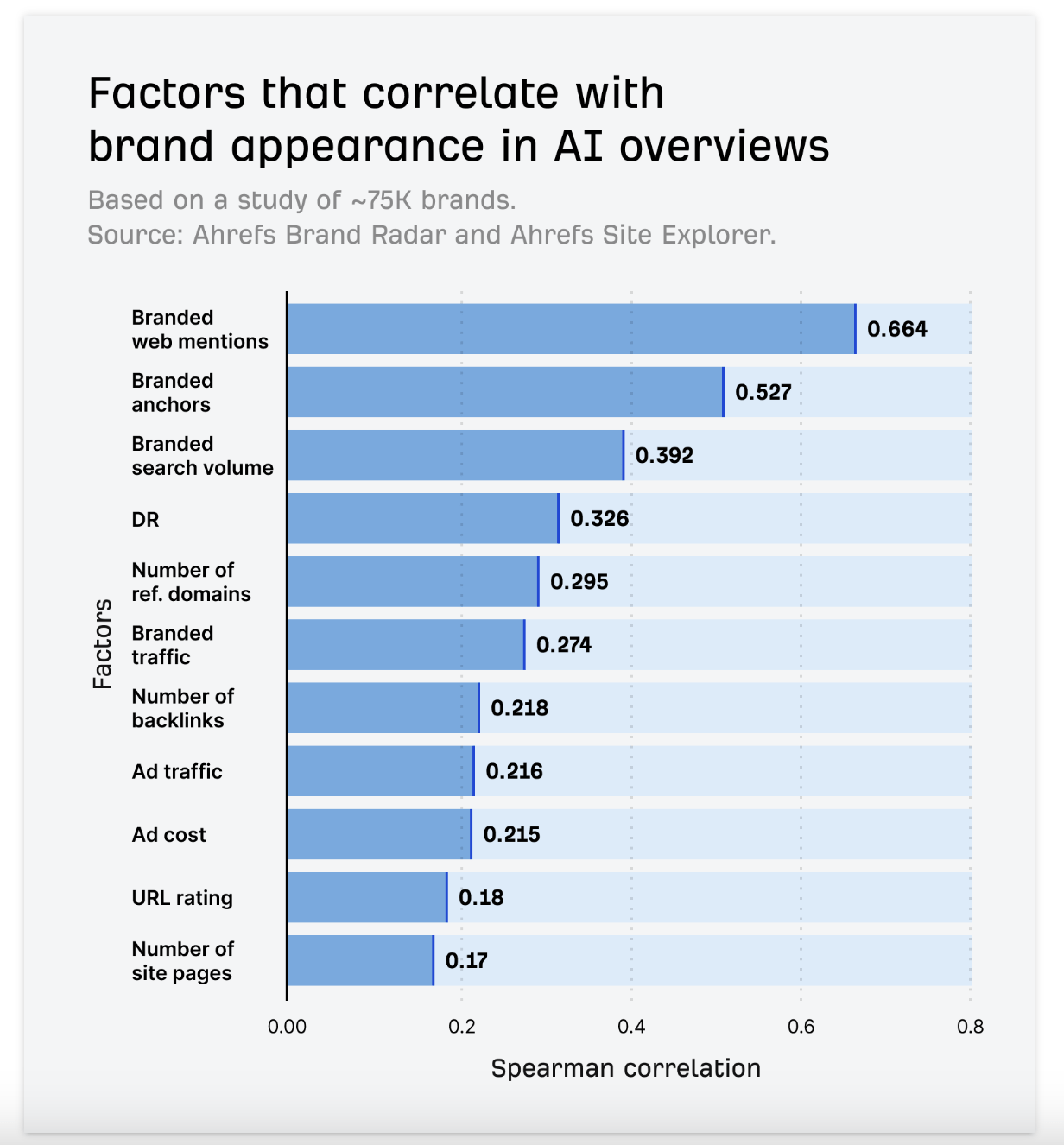Your brand might not be optimised for AI summaries and that means it could quietly vanish from the conversation. While it may sound dramatic, this is the reality we’re stepping into.
Search and discovery have changed. Visibility and reputation are now two sides of the same coin. For B2B marketers, that’s a big deal. Long sales cycles depend on trust. Discoverability depends on authority. And both, increasingly, depend on how seamlessly your SEO, content and PR efforts pull in the same direction.
Gone are the days when PR owned the story and SEO owned the rankings. Buyers and algorithms now want credible brands that show up consistently wherever they look, scroll or ask a question. It’s the era of Total Search. And as Rand Fishkin recently said, which I feel perfectly applies to content, marketers need to “Make something people want to talk about”. In the age of soulless AI-generated content, focusing on creating something worth sharing and discussing matters more than ever.

In this article, we’ll explore how blending SEO, content and PR can turn organic visibility into genuine brand authority. You’ll see why search engines are prioritising reputation signals, where traditional silos fall short and how an integrated approach can help your business not only be seen but, more importantly, believed.
The new search landscape: visibility = reputation
From keywords to credibility
SEO has moved on from keywords. Search engines’ focus is now on entities: the people, organisations and ideas they trust. In short, Google cares less about who’s talking and more about who’s worth listening to.
That’s why brand authority signals, such as mentions in respected publications, consistent messaging and genuine engagement, now outweigh sheer link volume. SEO has become a branch of brand marketing. The more your company is cited and discussed, the more search engines treat you as a reliable source.
AI-driven summaries raise the bar even higher. When someone asks a complex question, those summaries don’t pull from random posts. Instead, they quote recognised authorities. To be included, your content needs structure, clarity and the kind of credibility PR has always excelled at building.
Branded searches: the quiet signal of trust
When people head to Google, they’re often typing a brand name, not a category. They already have someone in mind. They’re checking credibility as well as exploring options.
Branded search volume is one of the clearest signals of awareness and trust. It means your story’s sticking. If people are searching for your name or seeing it crop up in articles, snippets and AI summaries, it’s proof that your reputation’s starting to do the heavy lifting for you.
PR coverage as an SEO signal
Digital PR has evolved into something broader than link building. Mentions, citations and credible coverage all feed the same goal: showing search engines that your brand can be trusted.
It has become a credibility engine. Each piece of coverage, every expert comment or mention in a trusted space, gives both people and algorithms a clearer picture of who you are and why your voice matters.
As this ahrefs study shows, there is high correlation between brand mentions and AI Overview brand visibility.

SEO and PR have long operated in parallel, each strong in its own domain: SEO mastering visibility through technical precision and PR excelling at storytelling and brand perception. To win both hearts and rankings, the two tactics can’t work in isolation. To build reputation and reach, brands must unite storytelling and search, creating content that both ranks and resonates.
The new formula: storytelling + search performance
The distance between storytelling and search performance has less to do with creativity and more to do with structure. Skilled SEOs have always written with people in mind, but the wider process around them often separates technical precision from narrative intent. The reality is that every piece of content now needs to appeal to two audiences at once: the reader looking for meaning and the system deciding what earns visibility. Closing that gap means shaping your marketing around both discovery and credibility, without losing the human voice that gives it weight.
So how do you do that in practice? Let’s break it down.
1. Start with real research, not gut feel
Skip the guesswork. Start by identifying what your customers actually search for. Not just broad topics, but the phrasing, context and questions behind them. Pair your keyword research data with interviews or call transcripts to capture the language buyers actually use.
Then, bring your PR and SEO teams into the same room to review it. PR gets to see what people are asking, SEO gets context on the messaging that resonates. Together, you can decide which stories to prioritise and which messages deserve amplification.
2. Match your story to real intent and back it up
Once you understand what your audience is looking for, shape those insights into stories that have depth and credibility. It’s not enough to answer a question – your content needs to prove it knows what it’s talking about.
Support your message with something tangible: data, expert insight or a real example that shows you understand the context behind the search. Then make sure your PR team is working from the same playbook, using that same evidence to strengthen earned coverage and thought leadership.
This approach ensures your content not only meets intent but also builds authority both in search results and across the wider industry conversation.
3. Keep messaging consistent across channels
Use one message architecture for all owned and earned media. Your blog intro, press quotes and social snippets should reflect the same core phrasing and themes. It doesn’t have to be word-for-word, just unmistakably you.
This kind of repetition helps build entity strength in search and mental recall for audiences.
4. Structure content for AI-readability
AI tools and generative search engines reward structure. Use clear headings, short paragraphs and bullet points where they make sense. Add schema markup for your articles and authors so algorithms understand who’s saying what.
Think of it as writing for readers and machines: one appreciates clarity, the other depends on it.
5. Focus on authority-building
Authority grows from repetition and association. Build it by:
- Publishing consistently on a focused set of topics
- Collaborating with recognised experts or credible partners
- Targeting media that reinforce your niche (not just generic link-building)
Track progress not just with backlinks, but through branded search growth, mentions, Share of Search and performance on Google’s AI overviews and ChatGPT.
And stay consistent. Using the same terminology and themes over time helps search engines understand your focus. That’s how you become the go-to voice for a subject.
6. Integrate teams early
This is the big one. Bring PR, SEO and content together early, before strategies are signed off. Share briefs, share calendars, share wins. When these teams work as one, your message stops being fragmented and starts being magnetic: clear enough for humans to trust, structured enough for machines to surface.
The future outlook: where SEO, content and PR are headed
The next phase of digital visibility is already unfolding and, without a doubt, machines are helping write it. Search is morphing into something broader, smarter and far less predictable. The familiar ten blue links have given way to AI-generated summaries and understanding how different AI engines go from prompt to answer has become essential for organic teams.
Earned media has become training data. Mentions in trusted outlets, expert commentary and citations across the web help AI models decide which brands deserve a place in their answers. It’s digital PR, but with algorithmic weight behind it.
Authority, too, is becoming more micro. Hyper-specific credibility can outweigh broad exposure. The focus is really on being recognised where it counts.
And yet, with all this talk of algorithms, the human factor remains non-negotiable. Machines can summarise and predict, but they can’t originate meaning. They don’t feel a story’s truth or sense the tension in a headline. They cannot be creative. The B2B brands that will thrive are the ones pairing human creativity with machine-readable precision: writing content that doesn’t just rank but teaches AI how to describe them.
And this isn’t a one-and-done job, either. The pace of change demands constant recalibration: checking how your brand appears in zero-click search, refreshing old content, sharpening your stories. The companies that bake this adaptability into their workflow will stay credible, discoverable and trusted, whatever search looks like next year.
Turning insight into action
It’s tempting to treat all this as theory, but integration only works when it’s lived. So where should you begin?
- Audit what you’ve got. Review your content, PR coverage and SEO data. Spot the overlaps and the gaps.
- Map your authority signals. Track mentions, backlinks, citations and branded search trends.
- Bring your teams together. Create a shared editorial calendar where SEO, PR and content actually talk to each other. Collaboration shouldn’t be an afterthought.
- Pilot one integrated campaign. Pick a theme that matters, for example a product launch or fresh research, and run it through a shared story-plus-search process.
- Measure what matters. Look beyond clicks and coverage. Track trust signals like branded search growth, quality of mentions and appearance in AI summaries. Then tweak, test and repeat.
Visibility is now reputation. To stay discoverable in an AI-driven world, your SEO, content and PR need to move as one.
Get in touch today about building an integrated strategy that strengthens your authority and drives measurable organic growth.





